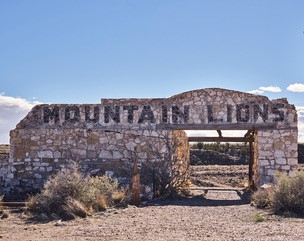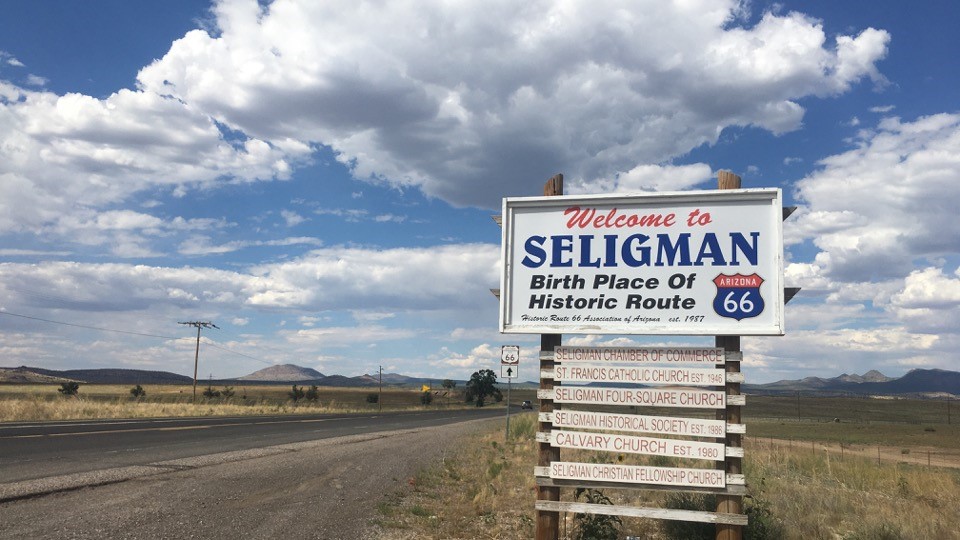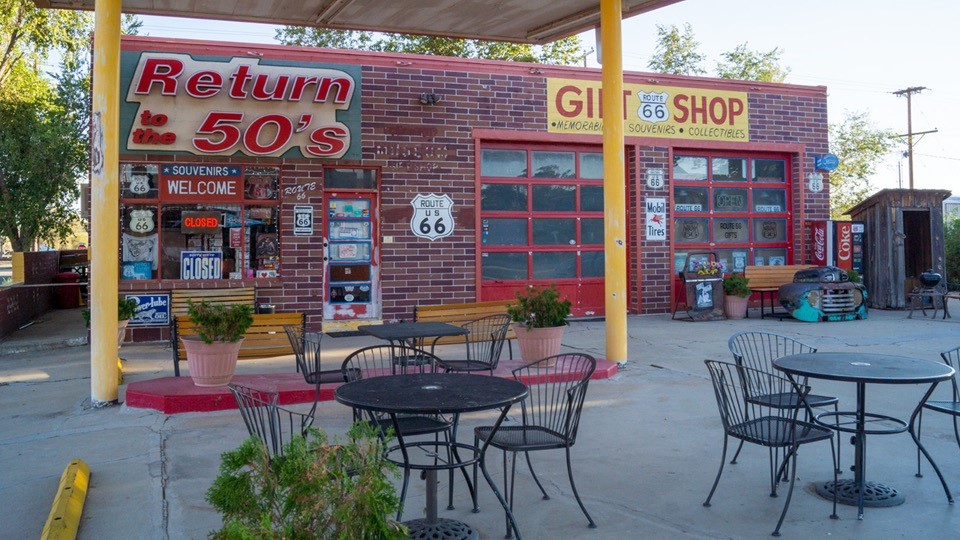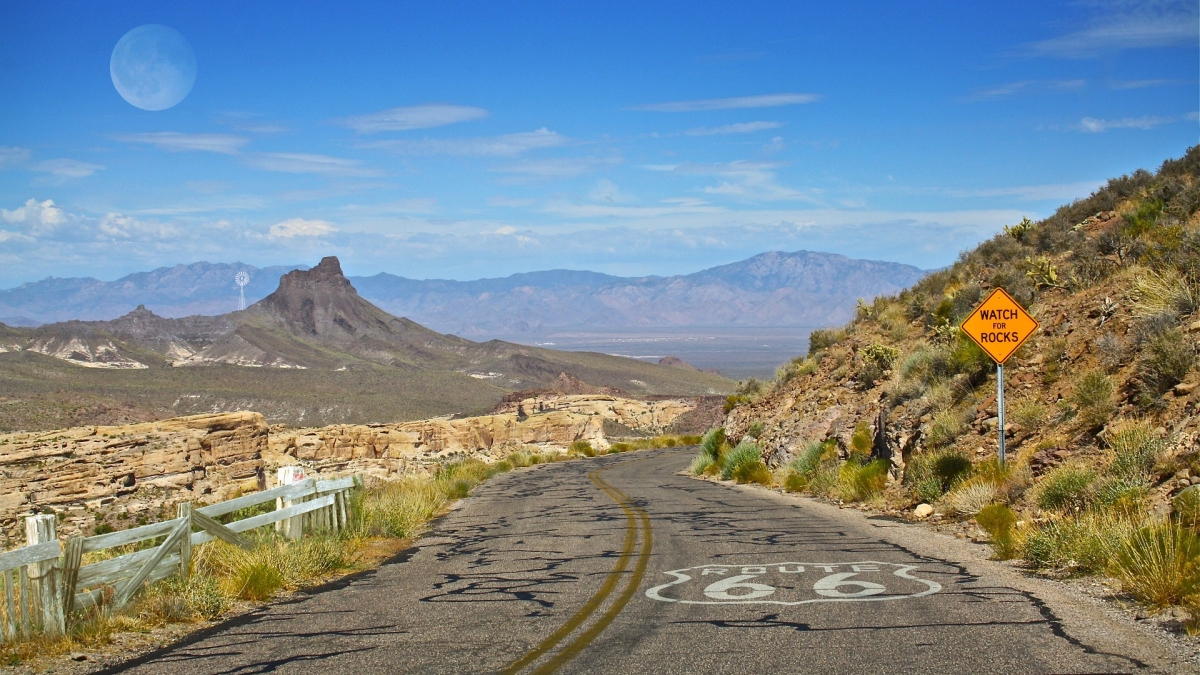In 1925, a huckster named Harry “Indian” Miller opened the Two Guns Zoo on Route 66 in northern Arizona.
Miller, who claimed to be Apache (he was not), wore a long braid and called himself “Chief Crazy Thunder.” He ran a trading post and zoo which included mountain lions, Gila monsters, snakes, birds and a lynx.
Life was not dull at Two Guns under Miller's tenure. In 1926 he was bitten on the nose by a Gila monster. Somehow this made national news. The following year he was acquitted of murdering his landlord. The year after that Miller was mauled by one of his mountain lions. In 1935 he went off to New Mexico to find the Seven Cities of Gold.

Photo of Two Guns Zoo ruins, Carol M Highsmith, 2018, Library of Congress
Miller’s zoo was one of Route 66’s earliest Arizona roadside attractions, a subject discussed at last weekend’s Arizona History Convention by an Arizona State University historian and others.
As logging and mining waned in northern Arizona, tourism became more important. When Route 66 was built in 1926, residents transformed railroad-created spaces into functional communities, said Daniel Milowski, who will earn his PhD in history this year at ASU.
The period from 1945 through 1965 was the heyday of Route 66. “This traffic fueled a Golden Age for automobile-related tourism,” Milowski said. “A nation passionate about its cars wanted to get places fast.”
They also wanted to stretch their legs, let the engine cool down, and maybe see something interesting at the same time. A roadside zoo filled that ticket, said Courtney Lamb, a history candidate at Claremont Graduate School.
Arizona animals were mostly working stock, like cows, mules, burros and oxen. Exotic animals were not rare either. Women’s fashions favored ostrich feathers in hats. The founder of Chandler had an ostrich farm (memorialized today in the Chandler Ostrich Festival). The short-lived Army Camel Corps ended up in Quartzite. Circuses were popular, and elephants were usually a part of them.
“People were used to this: an animal that was on display, that was also working,” Lamb said.

Seligman sign declaring it the birthplace of Historic Route 66 tourism. Photo courtesy of Daniel Milowski.
The next stage was zoos and animals on display. Lamb called 1900 through 1950 the entrepreneurial area. Animal exhibits were personality-driven by the owner. They tended to have domestic wildlife. The Murphy Zoo in Prescott, owned by railroad baron Frank Murphy, was the first. It was abandoned and the animals sent to LA. The Two Guns Zoo was another example.
The Interstate 40 bypass in Arizona, completed in 1984, left many Route 66 towns in the dust, Milowski said. I-40 disrupted the region and reconfigured it along new economic lines. Bypassed communities tied themselves to the mythic Route 66. This was a new type of tourism: Route 66 nostalgia.
It’s a mythical interpretation that ignores the historical nuance of the period, Milowski said.
Now the highway is an international symbol of America, with an identity crafted to attract tourists. Motor courts from Tucumcari to Winslow are packed with French and German tourists every summer, looking for the soul of 66.

Seligman Gift Shop. Courtesy Daniel Milowski.
“It shares much in common with the history of the American West and America as a whole,” Milowski said.
And zoos and roadside attractions have come full circle. Rather than the educational offerings offered by places like the Arizona Sonora Desert Museum in Tucson, attractions built since 2000 have followed the investor model, according to Lamb.
Places like Bearizona, Sea Life Aquarium and Odysea were all built to rake in the bucks.
“If we took Harry ‘Indian’ Miller to these places, he’d say, ‘Oh yeah, that’s what I was doing,’” Lamb said.
Top image courtesy of Pixabay.com.
More Arts, humanities and education

ASU alum's humanities background led to fulfilling job with the governor's office
As a student, Arizona State University alumna Sambo Dul was a triple major in Spanish, political science and economics. After graduating, she leveraged the skills she cultivated in college —…

ASU English professor directs new Native play 'Antíkoni'
Over the last three years, Madeline Sayet toured the United States to tell her story in the autobiographical solo-performance play “Where We Belong.” Now, the clinical associate professor in…

ASU student finds connection to his family's history in dance archives
First-year graduate student Garrett Keeto was visiting the Cross-Cultural Dance Resources Collections at Arizona State University as part of a course project when he discovered something unexpected:…
